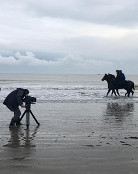Donn's Articles » Derby winners to stud
Derby winners to stud
Horse wins Derby, horse retires to stud. It is a commercially successful formula that has become so engrained into our psyche that, on the odd occasion on which a haphazard Epsom hero bucks the trend and stays in training as a four-year-old, it is a cause for inviting all your friends around and killing the fatted calf.
Of the last 20 Derby winners, Workforce is just the fifth to go back to the stable yard instead of the breeding shed as a four-year-old. For three of the four who preceded him, Operation Continue to Race was a failure.
High-Rise didn’t win in four runs as a four-year-old and won just a listed race in Dubai in three runs at five. North Light got beaten in the Brigadier Gerard Stakes on his only run as an older horse, while Sir Percy was beaten in all three of the races that he contested the year after he won the Derby. Only High Chaparral, winner of the Irish Champion Stakes and a second Breeders’ Cup Turf as a four-year-old, enhanced his reputation as an older horse.
The commercial argument is easily made. Regardless of whether or not you think that the Epsom Derby’s light burns just a little less brilliantly than it did 20 years ago – and long gone are the days when the Derby winner was the automatic object of a significant bid from Japan – it is still one of the most famous horse races in the world, one of the most prestigious.
It is still perceived by many Federico Tesio disciples as the quintessential test of all attributes that a thoroughbred racehorse should possess: pace, stamina, class, conformation, temperament. To win a Derby is to elevate yourself above your peers – there can only be one Derby winner every year – and to automatically attract the attention of the top breeders and the best broodmares in Europe.
That attention span can be short, however. Interest can be fleeting. While the successful breeding of thoroughbred racehorses is reliant on a solid foundation of science and experience, it is also, like most other walks of contemporary life, governed by the whimsical flows of fashion and perception. It is understandable that, all other things being equal, last year’s Derby winner is not as attractive a proposition for commercial breeders as this year’s Derby winner. To quote John Warren from last Wednesday’s Racing Post: “You have to leave people remembering what the horse was capable of.”
Sir Percy’s initial fee as a stallion was £8,000. It is impossible to know for certain, but that would surely have been significantly higher if he had been retired at the end of his three-year-old season or, better still, after he had left Epsom’s winner’s enclosure. North Light and High-Rise likewise.
The potential downside to a Derby winner’s reputation if he races on at four is significant. As well as that, there is the opportunity cost of racing, the cost of not going to stud.
For example, Sea The Stars’s fee was set at €85,000. He was set to cover 130 mares in his first season. That is a revenue of over €11 million in his first season at stud, as long as everything goes to plan. Okay, so Sea The Stars is an exceptional stallion prospect, bit in his glittering racing career, during which he won eight of his nine races, including the Guineas, the Derby, the Eclipse, the Juddmonte International, the Irish Champion Stakes and the Prix de l’Arc de Triomphe, he amassed a total of just under £4.5 million. You don’t need a degree in economics to figure that one out.
It has long been said that one of the major advantages that National Hunt racing enjoys over Flat racing is the fact that the National Hunt stars, with no residual value for breeding, return to the racecourse season after season. If the same was true of Flat racing, this year’s King George could feature Workforce, So You Think, Sea The Stars, Dylan Thomas, New Approach, Rail Link, Harbinger, Teofilo and Zarkava.
So a line-up like that may be fanciful in the extreme, but it was still disappointing that, after Sea The Stars won the Arc, the plea from racing fans was that he would go to the Breeders’ Cup. The possibility of the horse of a generation staying in training as a four-year-old could not even be countenanced as a realistic possibility.
Perceptions can only be altered over the passage of time, but measures could still be implemented to try to improve this situation from a racing perspective. For example, the abolishment of the three-year-old weight allowance in all-aged Group 1 races would be a start. Three-year-olds usually get 12lb from their elders in the King George, they get 8lb from their elders in the Sussex Stakes and in the Juddmonte International and in the Arc.
Such a move could result in fewer three-year-olds contesting these races – and God knows the King George for one can’t afford to be discouraging the Classic generation – but it would mean that all horses would be competing in them on a level playing field. It should follow that only an exceptional three-year-old would win a King George or an Arc.
It may take a little while, but perceptions would surely shift. A Derby winner who could beat his elders off level weights would be a hugely exciting stallion.
Such a move, which would obviously require international collaboration, should have the flipside effect of making it easier for the older horses when they would take on the three-year-olds in Group 1 races, therefore making it more attractive for their owners to keep them in training as older horses. Maybe that King George line up wouldn’t be so fanciful after all.
© The Racing Post, 31st May 2011


 Follow Donn
Follow Donn